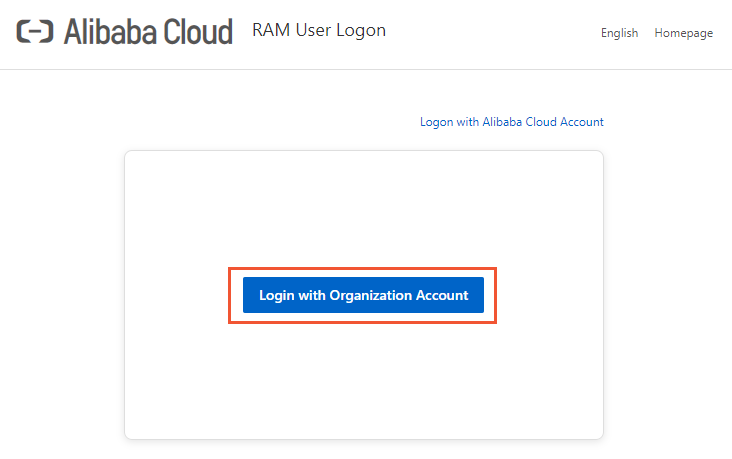このトピックでは、ShibbolethとAlibaba Cloud間でユーザーベースのシングルサインオン (SSO) を実装する方法の例を示します。 この例では、クラウドIDプロバイダー (IdP) とAlibaba cloud間のエンドツーエンドSSOプロセスについて説明します。
準備
Shibboleth、Apache Tomcat、およびLightweight Directory Access Protocol (LDAP) 認証サーバーをインストールします。
LDAP認証サーバーを設定します。
後で使用するために2つのアカウントを作成します。 まず、LDAP認証サーバーに管理者アカウントを作成します。 管理者アカウントの識別名 (DN) は
uid=admin,ou=systemで、パスワードはsecretです。次に、LDAP認証サーバーにテストアカウントを作成します。 テストアカウントのDNは
cn=test User,ou=users,dc=wimpi,dc=netで、パスワードはsecretです。 次の図は、詳細情報を示しています。
次のセクションでは、ユーザー情報フィールドについて説明します。
mail: Resource Access Management (RAM) ユーザーのログイン名。
memberof: RAMロールの名前。
samaccountname: Shibbolethへのログインに使用されるアカウントのユーザー名。
userpassword: Shibbolethへのログインに使用されるアカウントのパスワード。
LDAP認証サーバーに接続するようにShibbolethを設定します。
/opt/shibboleth-idp/conf/ldap.propertiesファイルの次の内容を変更します。# The LDAP authentication mode. idp.authn.LDAP.authenticator = bindSearchAuthenticator # The address of the LDAP-authenticated server. idp.authn.LDAP.ldapURL=ldaps://[The address of the LDAP-authenticated server]:389 # Disable Transport Layer Security (TSL) and Transport Layer Security (SSL). idp.authn.LDAP.useStartTLS = false idp.authn.LDAP.useSSL = false # The directory tree for search. idp.authn.LDAP.baseDN = dc=wimpi,dc=net idp.authn.LDAP.subtreeSearch = true # The logon matching rule. The user information field samaccountname is used to log on to the LDAP-authenticated server. idp.authn.LDAP.userFilter= (samaccountname={user}) # The username and password of the admin account that you created. idp.authn.LDAP.bindDN = uid=admin,ou=system idp.authn.LDAP.bindDNCredential = secret idp.attribute.resolver.LDAP.searchFilter =(samaccountname=$resolutionContext.principal)
このトピックで説明するShibbolethの設定は提案であり、ShibbolethからAlibaba CloudへのエンドツーエンドSSOプロセスを理解するためにのみ使用されます。 Alibaba Cloudは、Shibbolethの設定に関するコンサルティングサービスを提供していません。
ステップ1: Alibaba CloudのSAML SPメタデータファイルをダウンロードする
Alibaba CloudアカウントでRAMコンソールにログインします。
左側のナビゲーションウィンドウで、を選択します。
SSOタブで、ユーザーベースSSOタブをクリックします。
セットアップSSOセクションで、SAMLサービスプロバイダーメタデータURLパラメーターの値をコピーします。
ブラウザで新しいタブを開き、アドレスバーにURLを貼り付けます。 表示されるページで、ページを右クリックして [名前を付けて保存] を選択し、XML形式のメタデータファイルをダウンロードし、ファイルを
/opt/shibboleth-idp/metadata/aliyun-ram-user-metadata.xmlとして保存します。説明XMLファイルには、Alibaba CloudをSAML (Security Assertion Markup Language) サービスプロバイダー (SP) として設定するために必要な情報が含まれています。 Shibbolethの後続の設定のために、
EntityDescriptor要素にentityIDの値を記録します。
ステップ2: Alibaba CloudをShibbolethに登録する
手順1: Alibaba CloudのSAML SPメタデータファイルをダウンロードで取得したメタデータファイルを /opt/shibboleth-idp/conf/metadata-providers.xmlファイルに設定し、Alibaba CloudをShibbolethに登録します。
<!--
<MetadataProvider id="LocalMetadata" xsi:type="FilesystemMetadataProvider" metadataFile="PATH_TO_YOUR_METADATA"/>
-->
<!-- Find the code that is displayed in the preceding line in the file and replace the code with the code that is displayed in the following line. -->
<MetadataProvider id="AliyunMetadata" xsi:type="FilesystemMetadataProvider" metadataFile="%{idp.home}/metadata/aliyun-ram-user-metadata.xml"/>ステップ3: Shibbolethによって返されるユーザー属性を設定する
/opt/shibboleth/conf/services.xmlファイルを変更します。元の構成ファイルには
attribute-resolver.xmlフィールドが含まれており、完全な構成情報は提供されません。 完全な構成情報を提供するには、フィールドをattribute-resolver-full.xmlフィールドに置き換える必要があります。<value>%{idp.home}/conf/attribute-resolver.xml</value> <!-- Find the code that is displayed in the preceding line in the file and replace the code with the code that is displayed in the following line. --> <value>%{idp.home}/conf/attribute-resolver-full.xml</value>/opt/shibboleth/conf/attribute-resolver-full.xmlファイルを変更します。Shibbolethによって返されるユーザー属性を /opt/shibboleth/conf/attribute-resolver-full.xmファイルで設定します。 この例では、
メールフィールドがユーザー属性として使用されます。<!-- ========================================== --> <!-- Attribute Definitions --> <!-- ========================================== --> <!-- Schema: Core schema attributes--> <!-- Find the code that is displayed in the preceding line in the file and append the code that is displayed in the following line. --> <AttributeDefinition xsi:type="Simple" id="mail"> <InputDataConnector ref="myLDAP" attributeNames="mail" /> <AttributeEncoder xsi:type="SAML1String" name="urn:mace:dir:attribute-def:mail" encodeType="false" /> <AttributeEncoder xsi:type="SAML2String" name="urn:oid:0.9.2342.19200300.100.1.3" friendlyName="mail" encodeType="false" /> </AttributeDefinition>ldapサーバーへの接続を確立するために、ファイル内の
/opt/shibboleth/conf /LDAP. propertiesに含まれる構成情報を読み取ります。<!-- Example LDAP Connector --> <!-- <DataConnector id="myLDAP" xsi:type="LDAPDirectory" ldapURL="%{idp.attribute.resolver.LDAP.ldapURL}" baseDN="%{idp.attribute.resolver.LDAP.baseDN}" principal="%{idp.attribute.resolver.LDAP.bindDN}" principalCredential="%{idp.attribute.resolver.LDAP.bindDNCredential}" useStartTLS="%{idp.attribute.resolver.LDAP.useStartTLS:true}" ... </DataConnector> --> <!-- Find the code that is displayed in the preceding line in the file and replace the code with the code that is displayed in the following line. --> <DataConnector id="myLDAP" xsi:type="LDAPDirectory" ldapURL="%{idp.attribute.resolver.LDAP.ldapURL}" baseDN="%{idp.attribute.resolver.LDAP.baseDN}" principal="%{idp.attribute.resolver.LDAP.bindDN}" principalCredential="%{idp.attribute.resolver.LDAP.bindDNCredential}" useStartTLS="%{idp.attribute.resolver.LDAP.useStartTLS}" connectTimeout="%{idp.attribute.resolver.LDAP.connectTimeout}" responseTimeout="%{idp.attribute.resolver.LDAP.responseTimeout}"> <FilterTemplate> <![CDATA[ %{idp.attribute.resolver.LDAP.searchFilter} ]]> </FilterTemplate> </DataConnector>
/opt/shibboleth/conf/attribute-filter.xmlファイルに属性フィルターを追加します。PolicyRequirementRuleタグのvalue属性を、手順1: Alibaba CloudのSAML SPメタデータファイルをダウンロードで取得したEntity IDに置き換えます。<AttributeFilterPolicyGroup id="ShibbolethFilterPolicy" xmlns="urn:mace:shibboleth:2.0:afp" xmlns:xsi="http://www.w3.org/2001/XMLSchema-instance" xsi:schemaLocation="urn:mace:shibboleth:2.0:afp http://shibboleth.net/schema/idp/shibboleth-afp.xsd"> <!-- Find the code that is displayed in the preceding line in the file and append the code that is displayed in the following line. --> <AttributeFilterPolicy id="aliyun"> <PolicyRequirementRule xsi:type="Requester" value="[entityID]" /> <AttributeRule attributeID="mail"> <PermitValueRule xsi:type="ANY" /> </AttributeRule> </AttributeFilterPolicy>
ステップ4: SAMLレスポンスでNameID属性を設定する
/opt/shibboleth/conf/relying-party.xmlファイルでNameID属性を設定します。beanタグのrelyingPartyIds属性を、手順1: Alibaba CloudのSAML SPメタデータファイルをダウンロードで取得したEntity IDに置き換えます。<!-- Override example that identifies a single RP by name and configures it for SAML 2 SSO without encryption. This is a common "vendor" scenario. --> <!-- <bean parent="RelyingPartyByName" c:relyingPartyIds="https://sp.example.org"> <property name="profileConfigurations"> <list> <bean parent="SAML2.SSO" p:encryptAssertions="false" /> </list> </property> </bean> --> <!-- Find the code that is displayed in the preceding line in the file and replace the code with the code that is displayed in the following line. --> <bean parent="RelyingPartyByName" c:relyingPartyIds="[entityID]"> <property name="profileConfigurations"> <list> <bean parent="SAML2.SSO" p:encryptAssertions="false" p:nameIDFormatPrecedence="urn:oasis:names:tc:SAML:1.1:nameid-format:emailAddress" /> </list> </property> </bean>/opt/shibboleth/conf/saml-NameID. xmlファイルでnameid属性の生成方法を設定します。<!-- Find the following code. Comment out the code to make the configuration into effect.--> <bean parent="shibboleth.SAML2AttributeSourcedGenerator" p:omitQualifiers="true" p:format="urn:oasis:names:tc:SAML:1.1:nameid-format:emailAddress" p:attributeSourceIds="#{ {'mail'} }" /> <bean parent="shibboleth.SAML1AttributeSourcedGenerator" p:omitQualifiers="true" p:format="urn:oasis:names:tc:SAML:1.1:nameid-format:emailAddress" p:attributeSourceIds="#{ {'mail'} }" />NameID属性に関する情報を
/opt/shibboleth/conf/saml-nameid.propertiesで設定します。idp.nameid.saml2.default = urn:oasis:names:tc:SAML:1.1:nameid-format:emailAddress idp.persistentId.useUnfilteredAttributes = true idp.persistentId.encoding = BASE32
ステップ5: ShibbolethでSAML IdPのメタデータファイルを取得する
Apache Tomcatを再起動して、上記の設定を有効にします。
https:// <LDAPサーバーのIPアドレス>/idp/shibbolethにアクセスし、メタデータファイルをコンピューターに保存します。
ステップ6: Alibaba Cloud管理コンソールでユーザーベースSSOを有効にする
RAMコンソールの左側のナビゲーションウィンドウで、を選択します。
SSOタブで、ユーザーベースSSOタブをクリックします。
セットアップSSOの右側にある編集をクリックします。
SSO設定パネルのSSOステータスセクションで、有効をクリックします。
説明ユーザーベースSSOは、Alibaba CloudアカウントのすべてのRAMユーザーに対して有効になります。 この機能を有効にすると、Alibaba CloudアカウントのすべてのRAMユーザーがSSOを使用してAlibaba Cloud管理コンソールにログインする必要があります。 RAMユーザーを使用する場合は、この手順でSSO StatusパラメーターをDisabledに設定します。 ユーザーベースSSOを有効にする前に、RAMユーザーのSSO設定を完了する必要があります。 それ以外の場合は、RAMユーザーとしてログオンできません。 この問題を回避するために、Alibaba Cloudアカウントを使用してユーザーベースSSOを設定することもできます。
メタデータファイルセクションで、ファイルのアップロードをクリックしてステップ5: ShibbolethでSAML IdPのメタデータファイルを取得するで取得したメタデータファイルをアップロードします。
[補助ドメイン名] で [有効] を選択します。 表示されるフィールドに、Shibbolethユーザー名として使用するメールアドレスのドメイン名を入力します。
この例では、
testdomain.alicloud.comを入力します。OKをクリックします。
手順7: Alibaba Cloud管理コンソールでRAMユーザーを作成する
RAMコンソールの左側のナビゲーションウィンドウで、を選択します。
[ユーザー] ページで、[ユーザーの作成] をクリックします。
ユーザーの作成ページで、ログオン名と表示名パラメーターを設定します。
説明ログオン名とShibbolethユーザー名に同じプレフィックスを含める必要があることを確認してください。 この例では、ログオン名のプレフィックスはtestUserです。
[アクセスモード] セクションで、[コンソールアクセス] を選択し、パラメーターを設定します。
OKをクリックします。
設定結果の確認
上記の設定を完了すると、Alibaba CloudまたはShibbolethからSSOを開始できます。
Alibaba CloudからSSOを開始する
Alibaba CloudアカウントでRAMコンソールにログインします。 [概要] ページで、RAMユーザーのログインURLをコピーします。
ページの右上隅にあるプロフィール写真の上にポインターを移動し、[ログアウト] をクリックします。 次に、ブラウザのアドレスバーにログオンURLを貼り付け、Enterキーを押します。 新しいタブでURLにアクセスすることもできます。
[組織アカウントでログイン] をクリックします。 Shibbolethのログインページにリダイレクトされます。

Shibbolethのログインページで、ユーザー名testUserとそのパスワードを入力し、[ログイン] をクリックします。
ログインが成功すると、Alibaba Cloud管理コンソールのホームページにリダイレクトされます。
ShibbolethからSSOを開始する
https:// <LDAPサーバーのIPアドレス>/idp/profile/SAML2/Unsolicited/SSO?providerId=<entityID>にアクセスします。<entityID>を、手順1: Alibaba CloudのSAML SPメタデータファイルをダウンロードで取得したエンティティIDに置き換えます。Shibbolethのログインページで、ユーザー名testUserとそのパスワードを入力し、[ログイン] をクリックします。
ログインが成功すると、Alibaba Cloud管理コンソールのホームページにリダイレクトされます。
よくある質問
設定結果の確認時に問題が発生した場合は、/opt/shibboleth-idp/logs/idp-process.logファイルを使用して問題を特定できます。 次のセクションでは、よくある質問に対する回答を示します。
有効なユーザー名とパスワードを使用してShibbolethにログオンしたときに例外が発生した場合はどうすればよいですか?
/opt/shibboleth-idp/logs/idp-process.logファイルにエラーメッセージを表示します。 ValidateUsernamePasswordエラーメッセージが表示された場合は、LDAPサーバーの接続設定とデプロイを表示します。 コメントアウトする必要があるコードがコメントアウトされ、余分なスペースが存在しないことを確認します。
Shibbolethにログオンしてもシステムが応答せず、unable to connect to the ldapエラーメッセージが表示された場合はどうすればよいですか?
LDAP. propertiesおよびattribute-resolver-full.xmlファイルのldapサーバーの接続設定が正しいかどうかを確認します。
Alibaba CloudにリダイレクトされたときにNameIDが見つかりませんエラーメッセージが表示されますか?
Step 3: Configure the user attributes that are returned by Shibbolethでmailフィールドが属性として正しくマップされているかどうかを確認します。Step 4: Configure the NameID attribute in the SAML responseでNameID属性が正しく設定されているかどうかを確認してください。
私は何をしますか?サポートされていないリクエストアクセスするとエラーメッセージが表示されますhttps:// <LDAPサーバーのIPアドレス>/idp/profile/SAML2/Unsolicited/SSO?providerId=<entityID>?
entityIdフィールドが正しく指定されているかどうかを確認します。 metadataファイル、attribute-filter.xmlファイル、およびrelying-party.xmlファイルのentityIdフィールドの値が同じであることを確認します。
応答署名が無効Alibaba Cloudにリダイレクトされるとエラーメッセージが表示されますか?
ShibbolethのメタデータファイルをAlibaba Cloudに再アップロードします。